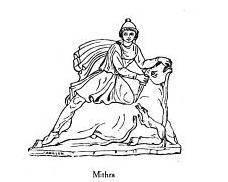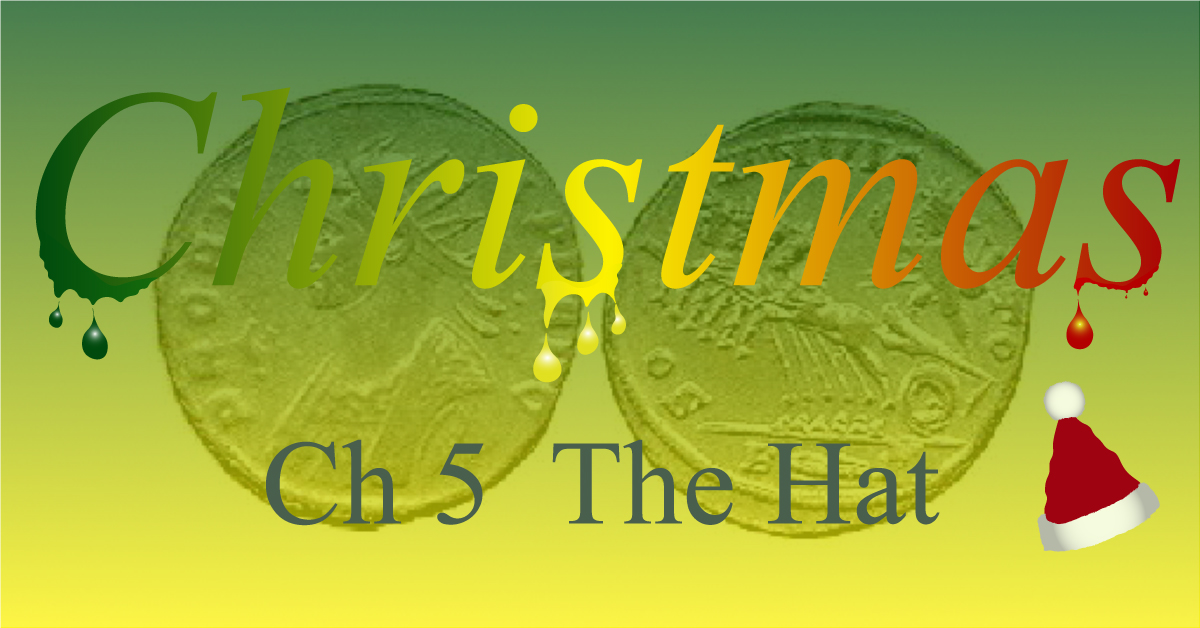
Every year, as Christmas rolls around, one will commonly see people wearing red pointed hats. They sometimes have little white balls on top, and they usually have a band of white around the bottom, but they are always red and always pointed. They are often called a Santa Hat in today's world, but this hat has been called by many other names throughout history. Remember, in pagan culture, the names and associated meanings often change, but the ritual or tradition remains very much the same. This is the case with the Santa Hat. It has been known throughout history as the Pileus, Phrygian Cap, Cap of Liberty, Freedman's Cap, Cap of Mithra, and has only recently taken on the name Santa Hat.
The 1861 edition of the New Latin-English School-Lexicon tells us the Pileus was a felt hat worn by the Romans at the Saturnalia, and it was considered a symbol of liberty.
This quote from an 1889 issue of The Chautauquan takes the reader on a trip, traveling by paper, whereby the Pileus is an integral part of the Christmas/Saturnalian experience.

This cap was certainly used in the worship of the sun as can be attested to by the title Mithraic Cap. This image shows the pagan god Mithra wearing the cap. The Santa Hat is modeled after the version used in the worship of the sun or Mithra. We can know this because the blood red color was given to the cap associated with Mithra.
The following quote verifies this information and also tells us the hat was used in sacrifice.
The Santa Hat is modeled after the version used in the worship of the sun or Mithra.
Mr. Spence goes on to convey the earliest root of the Phrygian Cap was representative of the waste product of circumcision. Some who practiced circumcision donned the foreskin after the ceremony. He correctly attributes the earliest circumcision rite to Abraham. Our Bible stands as witness to this fact and also to another certainty — the wearing of the byproduct was never part of the ritual.
There is a long historical record of the Pileus being used in celebration of the Saturnalia. This final quote is from a book titled The Mythology and Fables of the Ancients which was written in 1739.
The Origin of the Santa Hat
1. The traditions associated with the Santa Hat are descended from both sun worship and the Saturnalia. This is a reflection of the fact Christmas is descended from both Mithraism and the worship of Saturn on his day: the Saturnalia.
2. The Santa Hat was known as the Pileus, Cap of Liberty, and Freedman's Cap at the Saturnalia. It was known as the Phrygian Cap and Cap of Mithra in sun worship.
3. This hat was certainly used in the worship of the sun.
4. This cap is still worn on one of the two most important dates in sun worship ritual: the winter solstice which coincides with Christmas.
5. This hat was worn by the priest in sacrifice, hence the blood red color.
6. The populace only wore this hat at the Saturnalia. This coincides with how the populace wears the hat today. It is worn at the same time of year at the same festival. Only the names have changed. The Saturnalia is now known as Christmas and the Pileus is now known as the Santa Hat.
The next logical step through this list of traditions and customs may be to address the mythological entity who most commonly wears this hat.








